CLICK HERE to sign up for our Newsletter!
call us 713-405-1193
call us 713-405-1193
Blog
Abrasions During our Family Travels: Abrasion 3, Spain, December 2019
My mother has a pretty gut-wrenching medical history. She’s had multiple bouts of cancer, as well as run-ins with cardiac issues, diverticulitis, and so on. But when it comes to family vacations, she can generally rally with the best of them. For instance, in 2013, when she’d just finished brutal radiation for anal cancer, she peeled back her bedsheets, packed her bags, and met us in Italy for New Years. So you can imagine my surprise when, on the morning of December 26, 2019, I picked up the phone to hear my dad say, “Jess, your mother really isn’t feeling well. We’re not going to be able to make it to Spain tonight. Go ahead and unwind the trip for us.” Ughhhhh, what??? Unwind? What does that even mean?
I immediately went online and canceled my parents’ flights, but I don’t remember if we got flight credit or partial refunds. What I remember is dialing my friend Carlos’s number and asking what he was doing that night. Him and his husband didn’t have plans, so I said, “Wanna come to Spain?” And, believe it or not, they decided to come! That was one of the most spur-of-the-moment decisions anyone has ever made, I’m sure. Before they could think twice, I was on the British Airways website, checking availability for reward travel. The next thing we knew, they were booked on the same flight we were taking that evening and they had about six hours to find a dogsitter, pack their bags, and get to the airport. Wahoo!
That was one of the most incredible trips to Europe we’ve ever taken. With Carlos and Christopher, we rented a car and drove deep into interior Spain, marveling at the well-preserved walls of Ávila and the Roman aqueduct in Segovia. They were total champs with Josephine, and she absolutely adored having her two “uncles” along for the adventure.
Now, what’s funny is, that wasn’t the only abrasion of that trip. The other happened while Jamil and I slept during our first night in Madrid. Carlos and Christopher couldn’t resist an evening in Chueca, widely known as one of Europe’s most active gay neighborhoods. Chueca is filled with bars and clubs; the streets pulse with people at most hours of the day (except at like 5:30AM, which was when they made their way home from some seedy establishment). I’ll never know exactly what went down, but basically someone ran into Carlos, and while Carlos was getting his bearings and apologizing for getting in the way (he’s the most polite guy ever), that same someone stuck his hand in Carlos’s pocket and took his phone AND his wallet. Poor Christopher was in full tilt mode the next morning, as he attempted to cancel credit cards and deactivate Carlos’s phone. The ruckus didn’t bother Jamil and me so much; it just meant Carlos would have a little more difficulty spending cash (which really shouldn’t have bothered Christopher, either), and no cell phone for Carlos to communicate with. Regardless, we still had a great rest of the trip with amazing memories that we were so grateful to have made.
Author: Jessica Givens
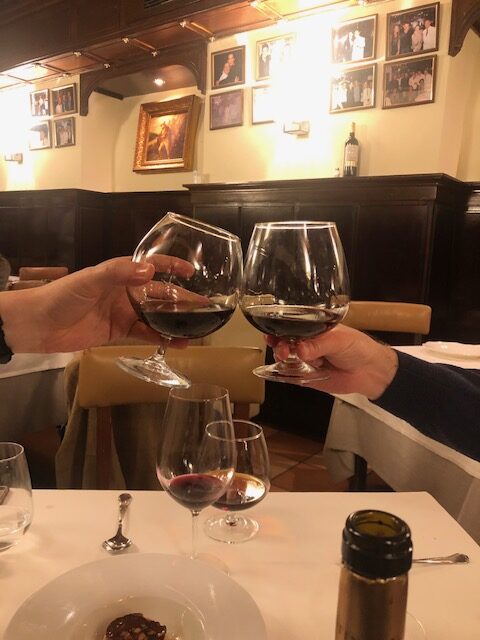
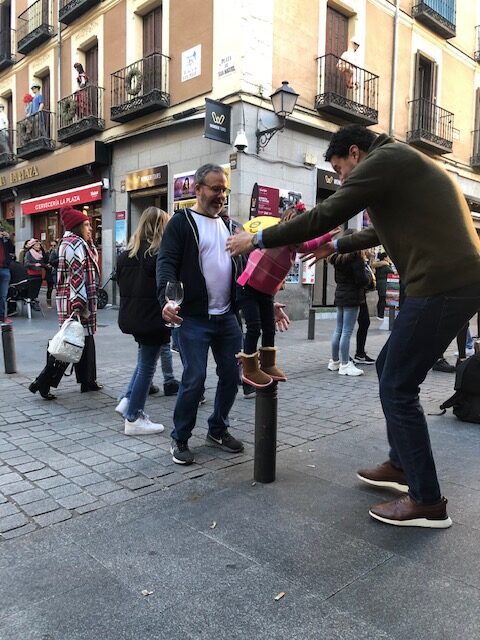

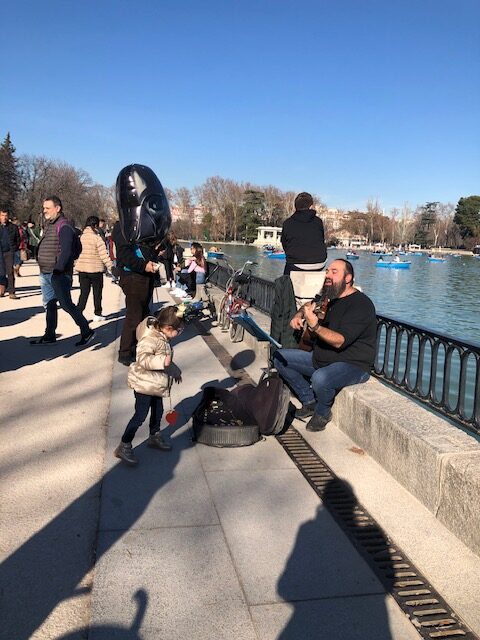
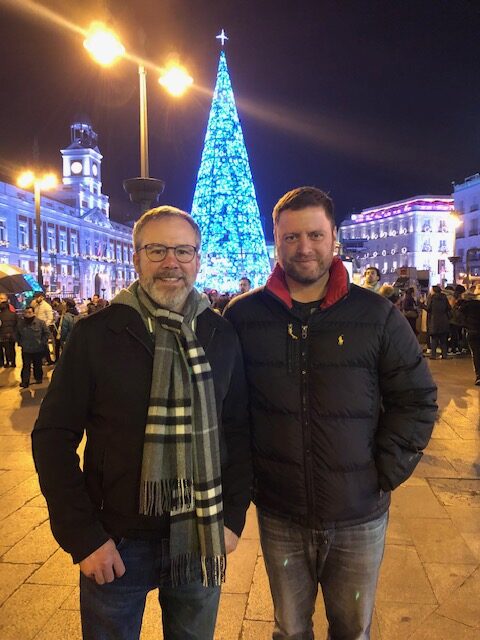
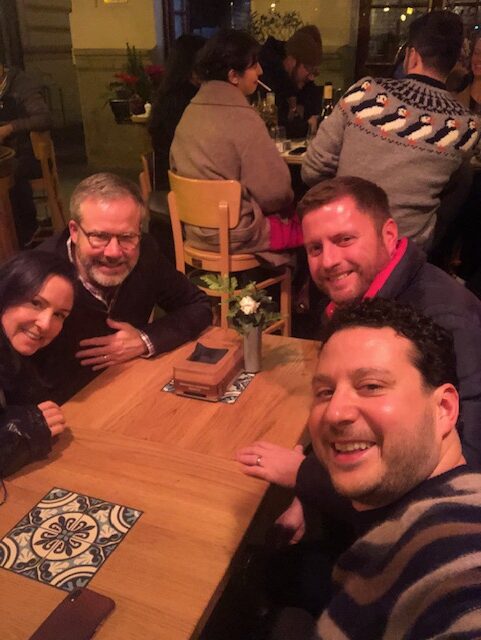
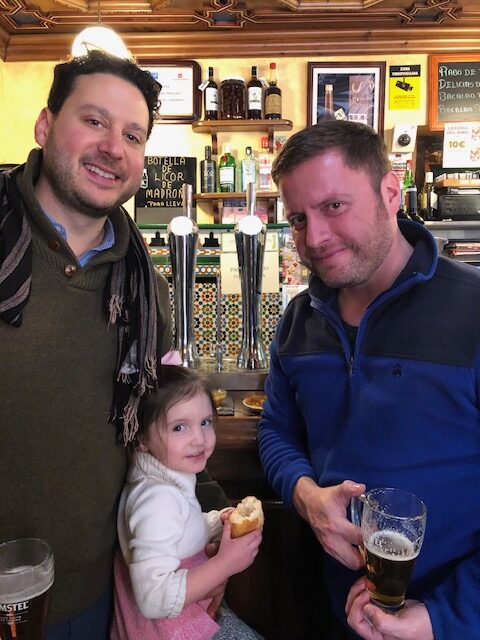
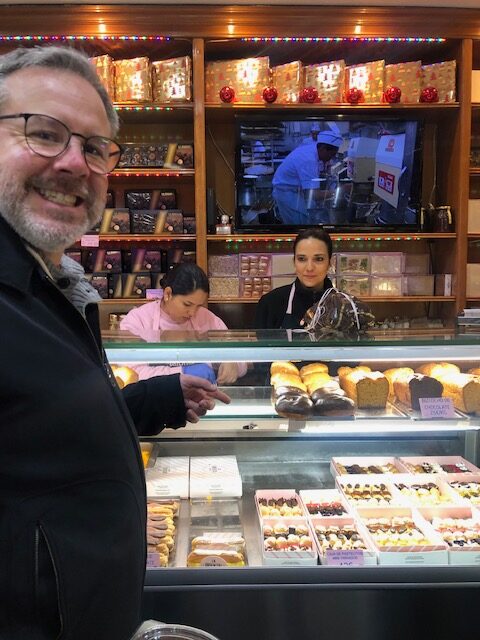
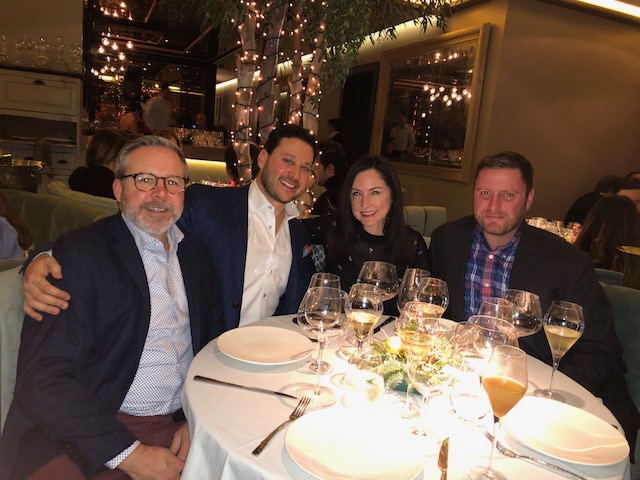
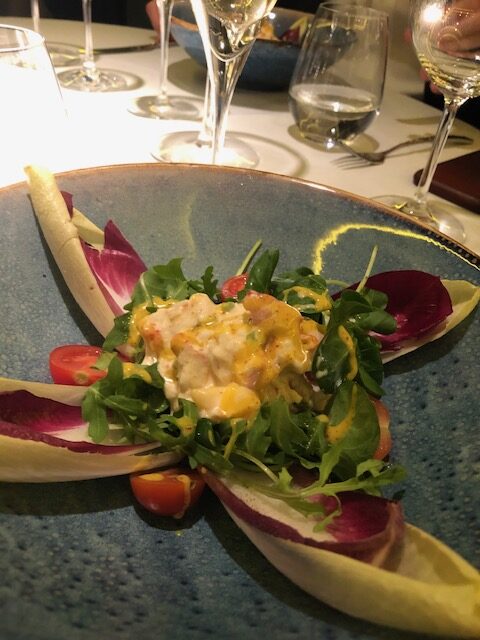
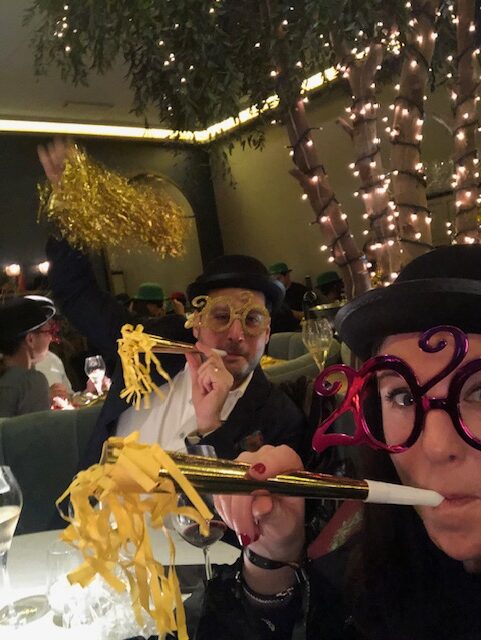
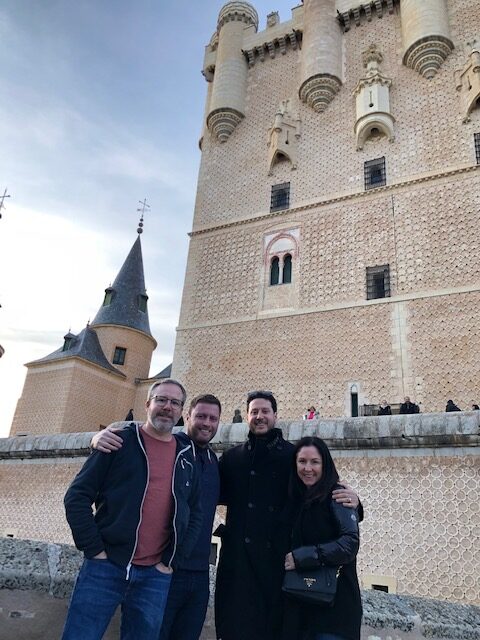
Abrasions During our Family Travels: Abrasion 2, Umbria, January 2017
When you think of Tuscany and Umbria, you tend to think of spring and summer, maybe a little fall, if you enjoy nettles and nutmeg, but you never think of snow. Or at least I didn’t until one day, when we were visiting the phenomenal Cathedral in Assisi, where St. Francis tended his flocks. It was more than chilly that day; it was downright COLD. But the skies looked relatively clear, even if the overall feel was undeniably a little gray.
Before I go further, I want to encourage you to visit Assisi. Visit that entire pocket of ancient Umbrian cities. They’re spectacular, so picturesque and historical. You can even visit in the winter. But don’t be surprised if the flurries start to swirl. That’s what happened to us.
We exited the cathedral, which involves a very interesting series of highs and lows via staircases, only to find a sheet of fresh snow on our car and a shower of snowflakes alighting on our heads and shoulders. Turning on the heater, I felt relieved to go downhill and find the snow limited to a certain altitude. Our hotel, the beautiful Relais Todini, was located on the rolling plains of Umbria. I couldn’t imagine the snow following us onto those yellow, cypress-dotted hills. But by the time we made our way back to Todi and sought out dinner in the town’s narrow, narrow streets, the snow was pelting our car. Why do I say car? Ha! It was not just a “car” – it was a straight-up van, and not one of the conversion vans of the 80’s. This was a spartan passenger van that handled like a tractor. I would have struggled to make the unforgiving, right-angled turns of Todi’s city center under any circumstances in that vehicle. In the dark and snow, it was positively terrifying.
So we abandoned that plan and placed a call to the Relais Todini, our hotel. Could they possibly feed our party of five? Their kitchen was supposed to close soon, they explained. I was terrified we’d have no dinner plans anymore. After explaining our situation, while stopped in our car in the snow, the chef agreed to hold it open until we arrived. Grateful, we drove gingerly through the blizzard down the serpentine lane to the Relais Todini. Even today, if I close my eyes, I can still see those fast flurries, blocking our path in Todi. I was so scared that night: scared we wouldn’t find a place for dinner, scared of sliding off that skinny road and having to make my parents walk through slippery mush, scared of Josephine freezing to death if we had an accident.
Funny that all those fears disintegrated and anxieties melted away as soon as we were inside the warmth of that magnificent hotel, where we ultimately had one of the most comforting, delicious dinners any of us could recall. It was marvelous, cozy, and certainly more memorable than whatever meal we’d planned in town. The night really turned around and we were thankful for a fantastic dinner as well as for the safety of our family.
Author: Jessica Givens
Abrasions During our Family Travels: Abrasion 1, Rome, December 2016
It’s practically tragic to love both bargains and business class. They don’t usually go hand in hand, but I do my best to forge their friendship. Hence the tickets I cobbled together for our first trip to Europe as a family of five. I’ve always felt like it’s better to split up long flights, especially with a child, because it gives parents a reasonably timed end to look forward to. You know you don’t have an eleven-hour flight to Amsterdam ahead; you can relax a little when your child wakes up over the Atlantic, knowing you’ll be cradled in the arms of Heathrow soon enough. So I was pretty gung-ho to buy tickets from Houston to Newark on United, then on British Airways from Newark to London and London to Rome. The only catch with an airline-switching plan like this: you have to collect your bags from one airline and recheck them with the other. With our arrangement, we’d also need to change terminals—with about 9 bags and a baby in tow. Much to our dismay, only 7 of those bags showed up in Newark. We were missing the bag holding Josephine’s car seat, where we’d also stuffed our heavy coats, and the bag filled with Josephine’s clothing – all of it. And to really complicate things, we would be boarding a different airline to Europe; why would United need to ship our things all the way to Rome when, to their knowledge, our journey ended in Newark?
As our plane lifted off for London, I was on the phone with United, lodging a complaint and praying they’d mercifully forward our gear to us. I called that same number every day for the next five days, between trips to boutiques in Rome to buy Josephine some substitute threads and search for new jackets for Jamil and me, just in case our bags never showed up. United promised the bags were on their way, having clambered aboard a Lufthansa flight to Munich, the baggage-locator-lady said. But then, crickets. When would the bags make it to Rome, I asked? Crickets. Was there a record number we could use to track their current location? Crickets. Then, on New Year’s Eve, the phone rang. One of our bags was at the Rome airport in the Alitalia storage area. Alitalia? Who knows.
Anyway, at about 4pm, my dad and I trekked out to Terminal 1, where we had a most unpleasant interaction with an Alitalia representative, who argued that it made no sense for our international, United-transported bags to be in the storage closet the United representative had indicated. Boasting that she’d worked in this industry for 27 years and never seen such a thing, she predicted that my bag wasn’t there. My dad bristled, tersely informing her that he’d worked in customs law for 50 years but would still never presume to claim such omniscience. Needless to say, the walk to the storage closet was tense, but when the Alitalia signora threw open the door, a giant smile spread across my face. There it was: shiny, black, and mine. My dad and I battered the lady with “I told you so” in probably fifty different permutations as we wheeled our treasure back to the taxi stand. What a relief.
Back at the hotel, I bounced up to our room, feeling more optimistic than I had in days, and knocked loudly on the door. Seconds later, Jamil cracked the door, took one look at me, looked at the bag, and said, “Whose bag is that?” … “Um, it’s ours!” I exclaimed. “No, it isn’t.” And the next thing I knew, he was calling United to tell them that we had one Mr. Yamaguchi’s suitcase.
Okay, so this is where things really got interesting for us.
The United people’s reaction defied our expectations. They’re usually cavalier, totally unconcerned. But that day, we learned that there’s liability attached to allowing one passenger to leave with another’s bag. The United rep went into full panic mode, demanding that Jamil return Mr. Yamaguchi’s suitcase immediately. United would send someone to collect it right away if we couldn’t make it back to the airport. Sensing that he finally had someone’s attention, Jamil said, “No. We will not release the Yamaguchi bag until United produces our two bags.” And with that, he said his goodbyes. I kid you not, ten minutes later, the phone buzzed to life, and a voice on the other end told us that our bags were at the Rome airport and we just had to go get them.
It was 7pm on New Year’s Eve in Rome. The streets were pitch-black; the city had shut off the streetlights in preparation for fireworks and revelry. The taxi stand, normally lined with eager cabbies, sat completely empty. Our prospects looked grim. Then, suddenly, out of nowhere glowed the green light of a free taxi. Jumping and waving in the middle of the street, we flagged it down and jumped in, asking the driver to put the pedal to the metal. He took me at my word. We practically soared to the airport, and when we arrived, we asked if he’d wait and go just as quickly back to Rome, so we could make it to our New Year’s Eve dinner. I won’t bore you with the details of going backwards through customs at baggage claim or of finding our bags sitting casually outside the Lufthansa office, just waiting to be collected. Instead, I’ll take you back outside the terminal as we exited, only to find a crowd of recently arrived passengers mobbing our taxi. We parted the seas to find him waiting patiently for us and turning away high Euro offers for a ride to the city. We had the only taxi at the airport that evening.
As we maneuvered our giant rented van out of the city the next day, snug in our warm coats and Josephine buckled safely into her car seat, I said a word of gratitude to Mr. Yamaguchi. I don’t know if he ever saw his bag again, but I feel certain that had it not been for that (suit)case of mistaken identity, we would never have seen ours.
Author: Jessica Givens
Abrasions During our Family Travels: An Introduction
Jamil and I have been traveling to Italy since we met. Truly. In June 2007, Jamil and I took our first trip together. He met me in Turin after I’d spent a week in Florence with my best friend, Jennifer, and her mother and sister. We drove up into the hills of Piemonte (or was it Lombardy?… the Italian regions in the North tend to overlap for me) and checked into a verdant, delightful agriturismo, a running farm that also hosts guests. We navigated the twisting highways of Genoa on the way to Pisa, where we not only saw the iconic tower, which really leans, but also collected Jamil’s misplaced luggage, which Continental had so graciously delivered to the Pisa airport because of its relative proximity to the agriturismo. Nothing was actually close to that agriturismo, nothing but the gravel road at a 30% grade that led treacherously up the craggy hillside and threatened to pull our Fiat Punto back to the autostrada. So, we didn’t blame the airline for opting out of a direct delivery. And that impromptu schlep to the Pisa airport gave Jamil his first brush with what my dad fondly refers to as “the abrasions of travel”. You inevitably encounter inconveniences when you fly thousands of miles from your comfort zone, and if you’ve got a somewhat sunny disposition about those glitches, you often find those are the stories you laugh about and relish later. We still talk about the humble supermarket where we stopped to buy groceries in Pisa. (That morning, the agriturismo unceremoniously and unapologetically informed us that dinner would not be served, despite the fact that driving at night on that godforsaken road was a death wish.) Determined to cook on the tiny kitchenette stove in our room, we purchased unmarked sausages in a Styrofoam container and an array of vegetables that I can no longer recall. All I remember are those incredible sausages, probably the best we’ve ever prepared. It was a highlight of that trip.
I felt like I might dedicate a few posts to the abrasions of travel we’ve faced, mostly since Josephine was born, because as with that surprise trip to Pisa, we’re still talking about those mishaps. Stay tuned.
Author: Jessica Givens
How to Raise a Jojo: Why Jamil Agrees to Travel So Much with my Parents
I feel like I need to address this point because so many people would dread traveling with their in-laws under any circumstances. Add to that the fact that my dad’s back has gotten pretty bad, and he can’t make it on our long power walks anymore or navigate bumpy streets without giving us anxiety that he’s going to fall (glad we did Pompeii when we did!). Oh, and he’s also lost most of his hearing. Plus, my mom has a whole array of health problems. I won’t go into detail, but believe you me, it’s made her the best customer any foreign pharmacy could ever want. We literally have to stop 5-10 times a day at various pharmacies, and while it drives us a little nuts, it’s just part of the experience. The quirkiness is kind of awesome.
My parents have always been adventurous travelers. Their honeymoon alone amazes me. No Cancun or Grand Canyon for them! Nope. Instead, they flew to El Paso and caught a second-class train to Mexico City, where they then hopped onto a second (or maybe third) class bus, filled with chickens and other small livestock, and rode through interior Mexico to reach a once-glamorous resort in the town of Tehuacan. Needless to say, the bloom of that hotel was off the rose — tennis courts overgrown with weeds, clotted tomato juice in the Bloody Marys, cracked bowling balls — so they ventured back to Mexico City, only to get turista (Montezuma’s Revenge) and spend the remainder of their trip praying for a breeze in an unairconditioned inn.
Experiences like that make them, if not completely flexible, quite comfortable rolling with punches. My dad has a phrase we repeat to Josephine regularly when a flight is delayed or a line at a rental counter snakes for 50 feet: “These are just the abrasions of travel.” And we have to face them with a positive attitude if we want to enjoy ourselves and appreciate the opportunity to see the world together.
My parents’ perspective adds so much fun to our trips. There wasn’t anything cooler than seeing my dad and Josephine equally in awe over the paintings in Queen Nefertari’s tomb. And does it get any better than taking your tiny child with your mom to the church your mom’s great grandparents built in a village in northern Lebanon? It really doesn’t. These are pinnacles of happiness in life. I’m glad Josephine gets to be there and experience that joy.
So, back to why Jamil agrees to take these trips… Although he sometimes serves as a pack mule, unloading 10 bags or so from the carousel at the airport, and performs a whole host of unsung tasks (running to buy water, seeing each of my parents safely down a flight of stairs, coordinating bellhops and porters, etc.), Jamil loves the hustle and bustle and the closeness.
His parents didn’t do any traveling at all. His mom moved from Israel to the middle of Texas and never went abroad again, to my knowledge. His dad was not an interesting dude, either. I say this objectively; he really wasn’t. So they were essentially the polar opposites of my parents, who simply never have a dull moment. The travel is fun, and we want Josephine to absorb as much of that energy as she can. It’s making her more adaptable, interesting, and wise.
Author: Jessica Givens
How to Raise a Jojo: The Value of Multigenerational Travel
As an only child, I’ve always spent a ton of time with my parents, and when we started traveling with Josephine, we included them without a second thought. Little did I know that what I thought was merely a family vacation would provide such important opportunities to introduce Josephine to her history and identity. Vacations allow for significantly more facetime than everyday interactions do, simply because we’re all sandwiched together. When we’re on trips with my parents, Josephine eats breakfast, lunch, and dinner with the whole squad; she ambles through the nooks and crannies of foreign cities with said squad; she navigates the challenges of delayed luggage and canceled flights with said squad, as well.
All of those activities are wellsprings of discussion: the time my parents discovered coddled eggs in the UK, for one. Also, the time when they threw back their heads and played the pimientos de Padron drinking game in Madrid with my mom’s cousin Charlotte, who departed for Spain for some unexplained reason and helped open Madrid’s first hamburger shop (called Knights and Squires — it is very bad. Do not try it.). Lastly, the time our flight home to the U.S. from Madrid was canceled right before my dad had a case to try in D.C., and during our meanderings around that airport, seeking solutions, he ran up a stalled escalator that started moving downward while he was mid-jog.
There are SO MANY stories that might not have ever come up if we hadn’t experienced those prolonged periods together, that continuous shared company. And while those experiences aren’t really a part of Josephine’s DNA, they’re fascinating and/or funny. They’re stories she can latch onto, and stories she may very well tell her own children one day. I love being in that detached universe, where all we have is one another.
Author: Jessica Givens
How to Raise a Jojo: The City of Rome
Rome may be the most magical city on Earth. I say “may be” because I often feel that wherever I am is the most magical city on Earth. However, Rome is a place I can visit over and over and never get bored. We’ve taken Josephine there four times. Maybe that’s why she’s so obsessed with pasta?
Each time we’ve visited Rome with Josephine, it’s been during the winter, when the Christmas lights are in full effect in every street and the air is just crispy enough for a trenchcoat over your sweater. It’s an incredible time to stand at the foot of the Spanish Steps with a bag of roasted chestnuts (which never taste quite as good as they smell). The city isn’t overflowing with tourists, but the hustle-and-bustle is just as pervasive as during the summer — it’s that unmistakable Christmasy energy. I just can’t get enough of it.
This past season was somewhat different from years past, though. It was our first trip to Europe in two years; like so many, we’d been homebound by the pandemic. To make the most of the experience, we decided to go not only to our old haunts in Rome but also to Egypt and Jordan, where we’d never ventured before. Consequently, we had to leave a little earlier than ever before and spend our first Christmas away from Houston in decades.
I was a little nervous about Christmas abroad with Josephine. She worried that Santa might not find us in Rome, and I worried that she’d miss the festivity of family, the warmth of Christmas morning next to our own tree. Still, I packed our bags, determined to make it incredible — BUT forgot her gifts!
We spent Christmas Eve (my birthday) on the hunt for replacement presents and wrapping paper, no small request the day before Christmas. Jamil and I pounded the pavement, pushing Jojo in her stroller because her little legs were firmly opposed to further walking. At each store, she’d get out and peruse the offerings. Little Pinocchio figurines? No one really wants to play with a wooden doll. Giant, stuffed gladiators? Those wouldn’t fit in the suitcase. Ultimately, while Jojo’s back was turned, I bought some LOL Surprize dolls and prayed she’d find them entertaining enough.
As I’ve explained before, I think that exposing kids to conversations and experiences with adults is key to their maturity. On this trip to Rome, we were lucky enough to travel not only with my parents but also with my godmother, my Aunt Donna, and her boyfriend, Roger.
We selected an amazing restaurant, Ristorante Gallura, for Christmas Eve dinner. It was quite elegant, and Jojo was expected to be on her best behavior. Dinner began at 9PM, and we ordered multiple courses. With each course, we made sure to select something Josephine might enjoy — the calamari in the fritto misto, the parmigiano and prosciutto, a gorgeous spaghetti alla vongole, and of course, dessert.
Josephine’s culinary exposure matters a great deal to us. We want her to be able to find something to eat on any (good) menu. If a restaurant has a children’s menu, we let her order from it, but if there isn’t one, we read the menu to her until something piques her interest. She loves seafood, vegetables, chicken, pork, lamb, beef. You name it. That’s not to say she doesn’t occasionally turn up her nose at something we put before her. She’s firmly opposed to jelly, for instance. She detests blueberries for some reason, too. Nothing can change her mind. I don’t even try. I despised mayonnaise and avocado; Jamil hated lima beans. Those little quirks distinguished us from the crowd.
We left Ristorante Gallura that night at almost midnight. Josephine never uttered a word of complaint. She also never got to look at an iPad. I wanted to reflect on why I think she’s so collected in these situations. We’ve been taking Josephine to nice restaurants since she was in utero. While she was in a carrier, we took her to restaurants regularly. She slept while we ended the night with a martini. When she got old enough to sit up in a restaurant and participate, we encouraged her to sit with us, drawing on notepads or coloring on children’s menus; if she got tired, we pulled her car seat out of the car, and she passed out by the table.
At Gallura, we got a large table that had an upholstered bench with pillows on one side. She could frolic over there and even lie down. We’ve done that at multiple restaurants, given her little work spots, so she could entertain herself. We also avoid the common tendency to have her food brought out first. She can eat the bread and enjoy the appetizers, but she can’t get her meal 30 minutes before everyone else. What’s the point? Then, she’ll be ready to leave when we’re sinking into the best course. Nope. She waits it out, and she always has. If she gets too tired to see the meal through to the end, she can fall asleep on the bench or in my arms (more than likely, though, Jamil’s!). By expecting her to abide by the same standards as the adults around her, we build Josephine’s confidence and give her experience modeling the traits that will one day add to her success. I know this strategy may not work for everyone, but it’s what we’ve done from Day One, and it’s served us well so far!
Enjoy the photo gallery from our trip below.
Author: Jessica Givens
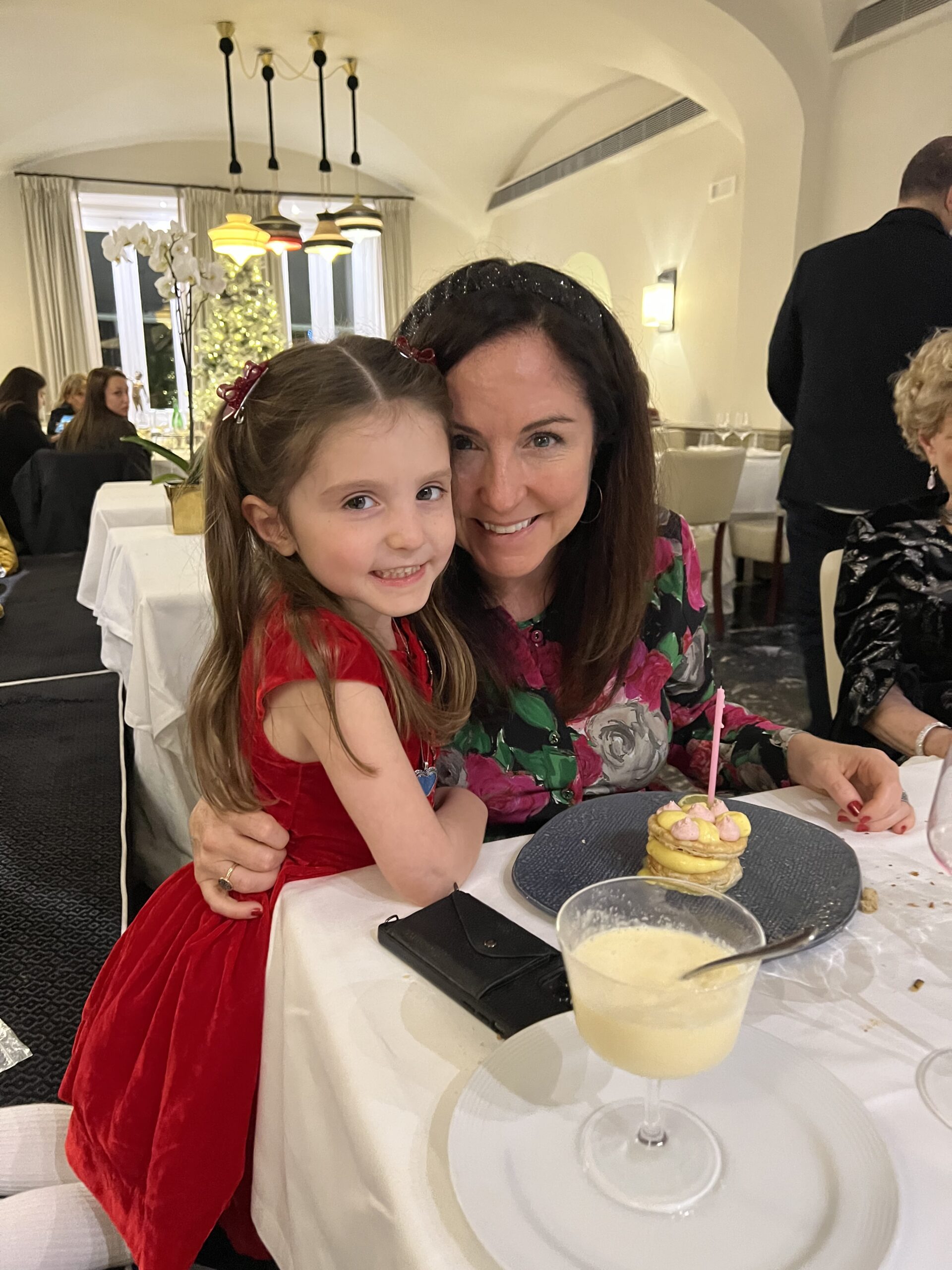
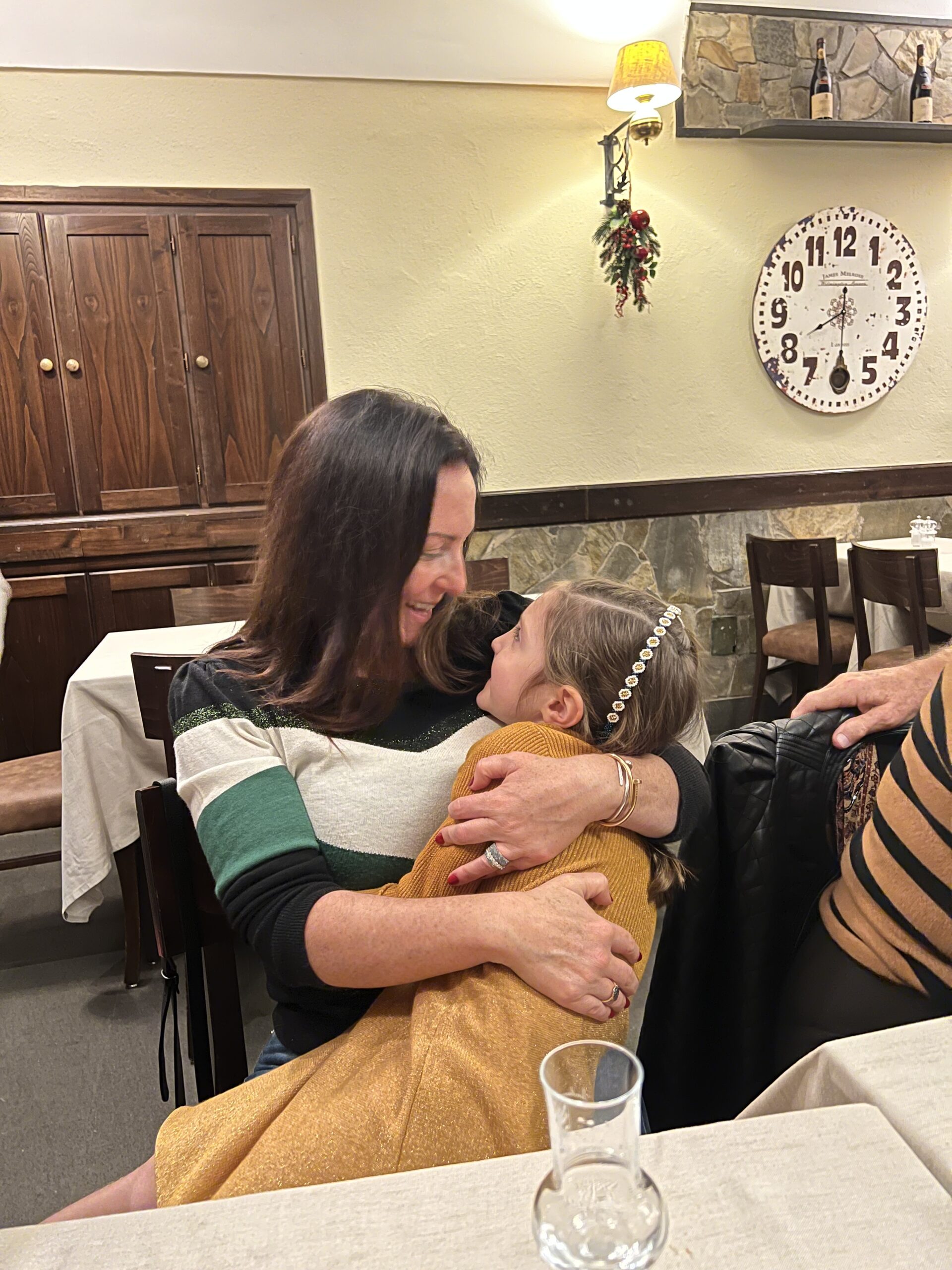

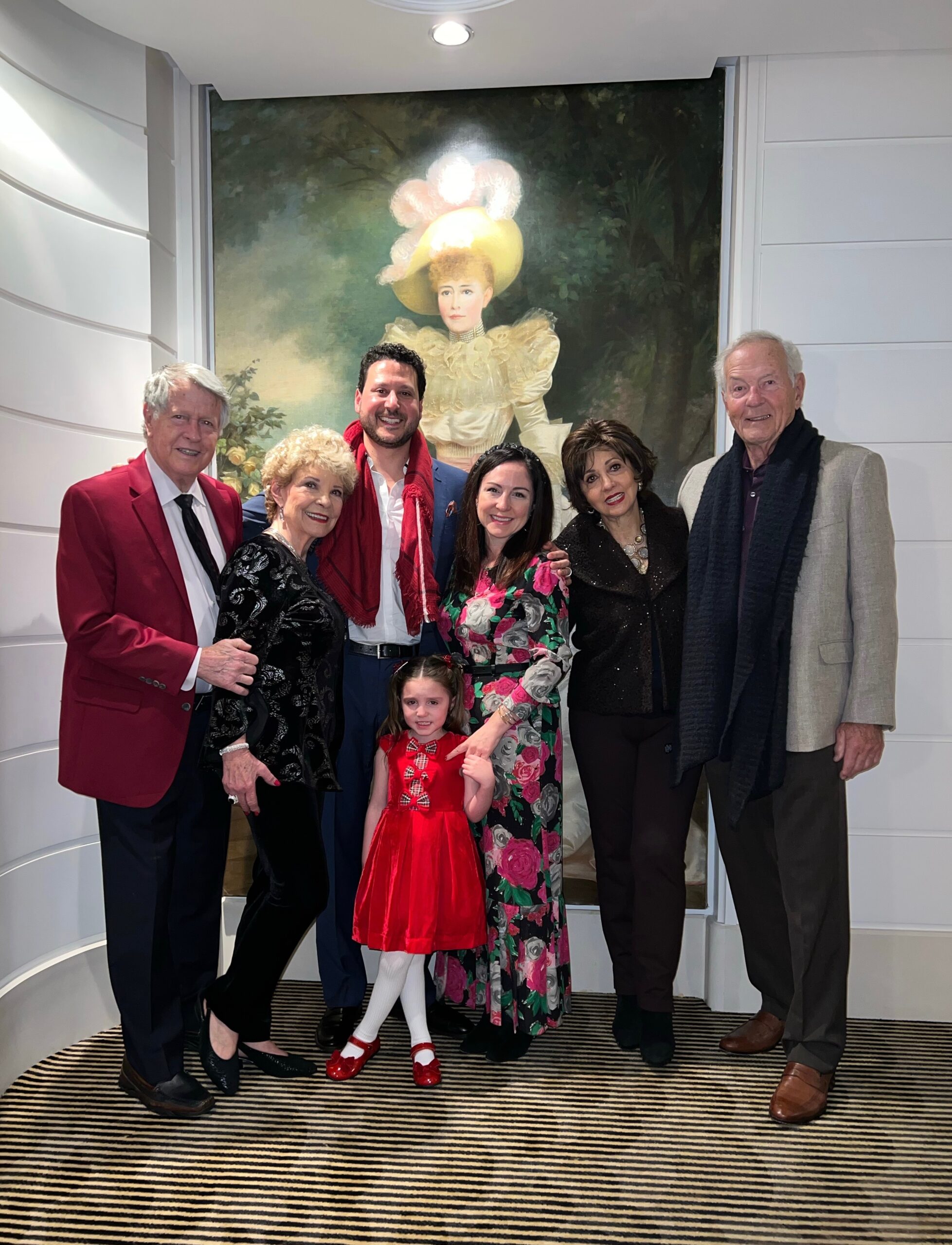
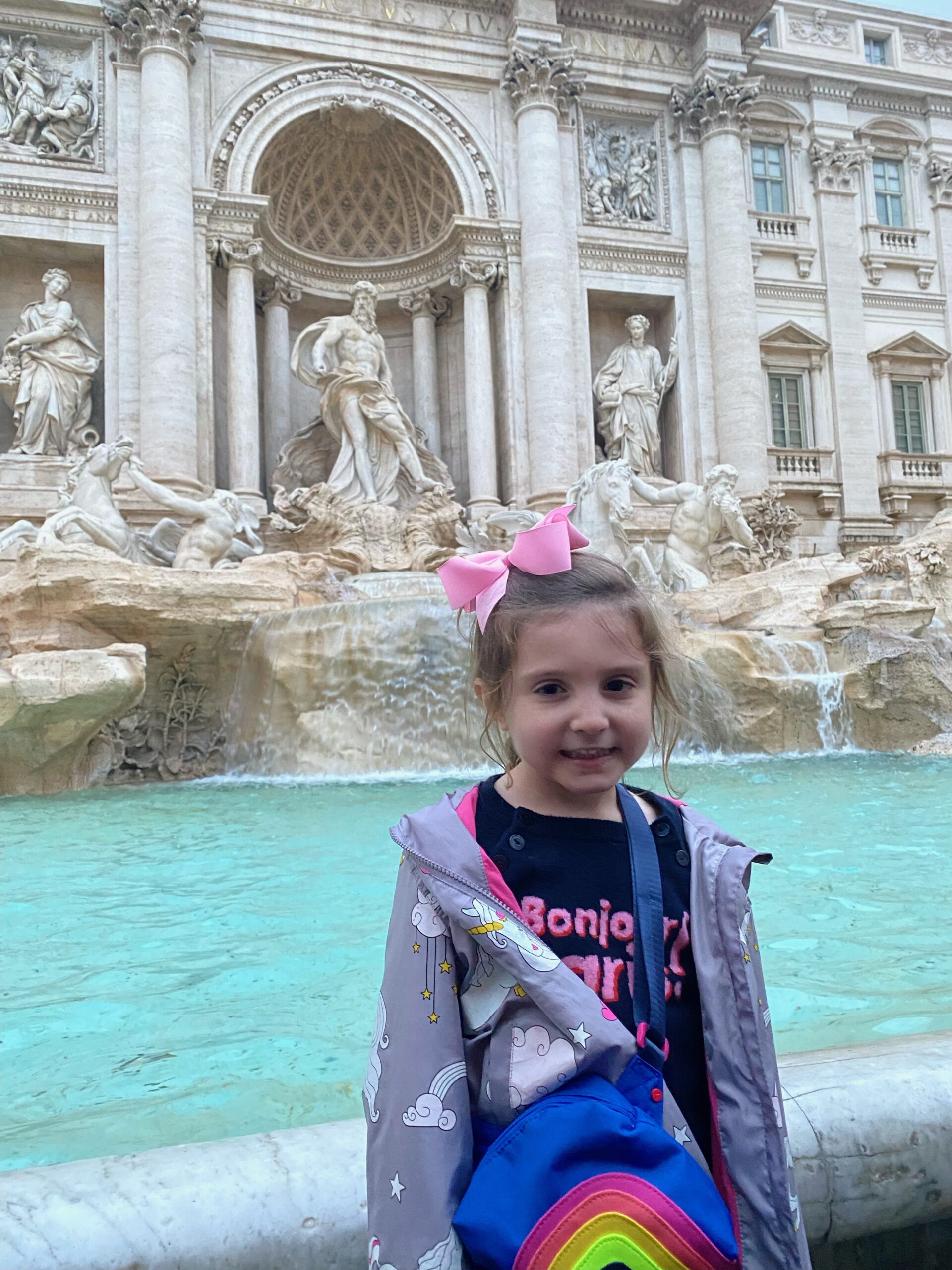
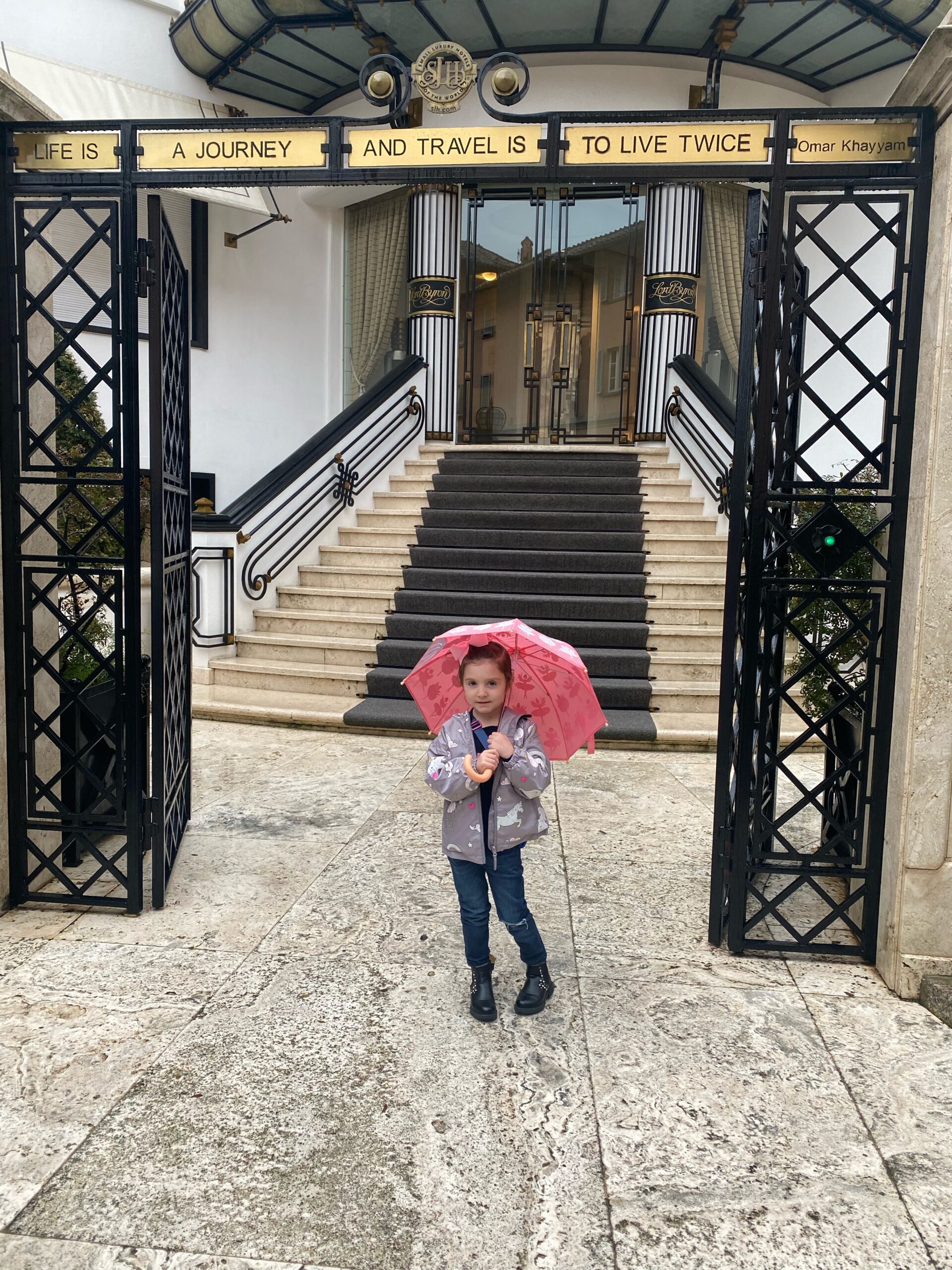
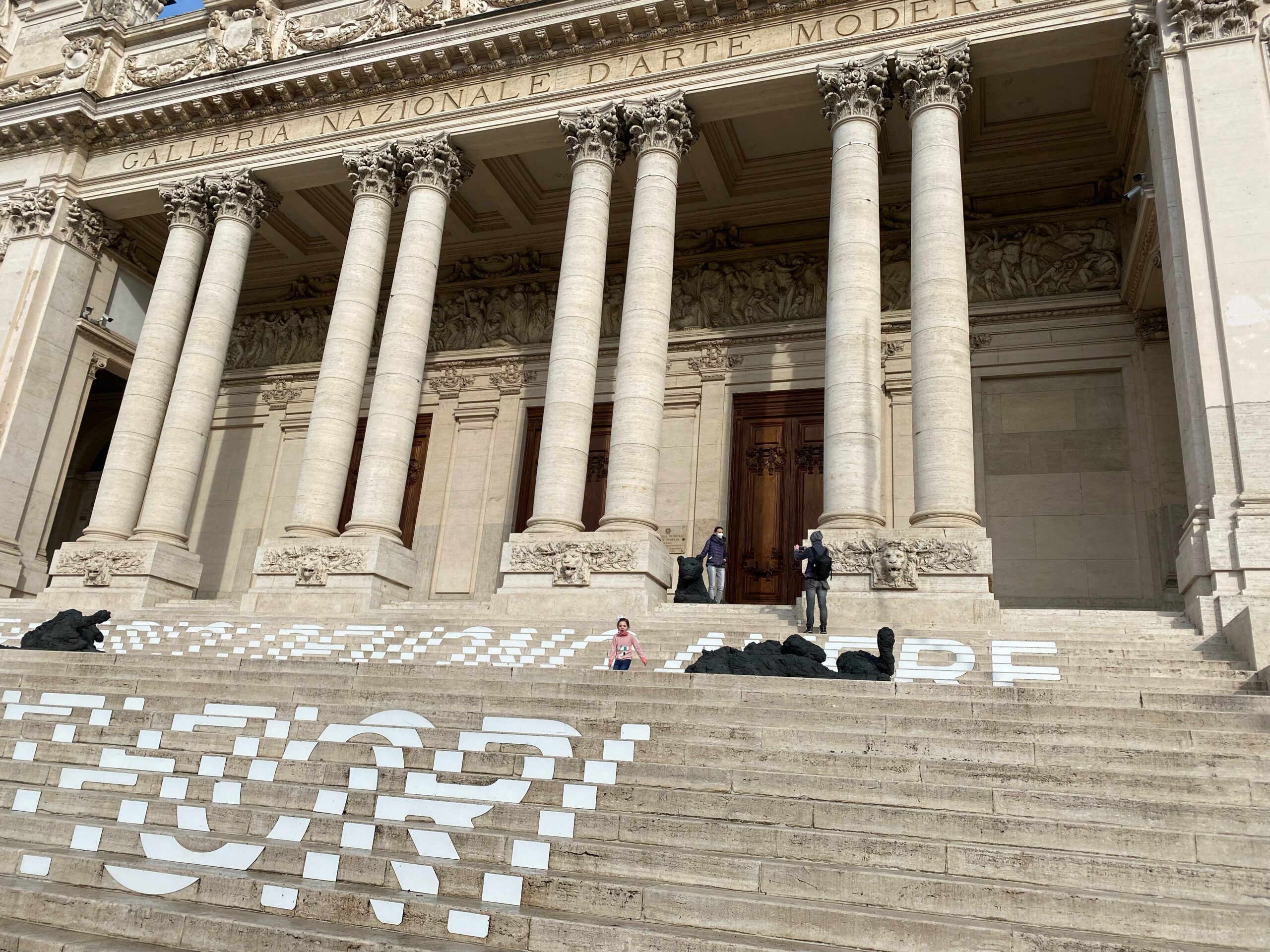
How to Raise a Jojo: How We Parent
Our parenting strategy revolves around exposing Josephine to as many ideas, cultures, people, and possibilities as we can. We believe firmly in the value of children getting comfortable around adults, learning to have mature conversations at a young age, and developing the poise to talk to (harmless) strangers. We also think that cultural exploration and exotic adventures cultivate an accepting and eager character.
Consequently, we bring many people of all ages in and out of Josephine’s life. We expect her to sit at a real, grownup dinner table with no technology besides a bag of Legos and a coloring book. Because our schedules are demanding, we don’t get to spend as much time with her as we’d like throughout the school year. We hired an amazing nanny when Josephine was born, and we credit Julie with furthering Josephine’s development. But we also seize opportunities to have immersive experiences with Josephine, so she can absorb as much of our beliefs, practices, and passions as possible.
For as much time as work and school will allow, we cart her all over the world. On those trips, we take her to museums and historical sites. We eat in all types of restaurants. We walk unfamiliar streets and play in new parks. In the process, we hope we’re giving Josephine an open mind. We hope we’re inspiring her to think big.
Stay tuned for my next post where I talk all about Josephine’s experience in the most magical city on Earth, Rome!
Author: Jessica Givens.
How to Raise a Jojo: Introduction
Every time people hear what Jamil and I do for a living, they immediately exclaim, “Oh, she’s going to be set for applying to colleges!” And maybe in some ways they’re right. We do have unusually deep knowledge about how students make themselves stand out in the application process. We do understand what programs exist to boost student resumes and enrich their image. However, what people don’t anticipate is that, for many reasons, we’re simply not wrapped up in any of that. Here are a few:
- We work with some of the most successful, entrepreneurial people in the world, and hardly any of them went to an illustrious college.
- We know that this is an evolving process. Even if we did try to carve out a stellar path for Josephine, the chances are, they’d change the rules of the game just as we reached the finish line. There’s no sense in trying to control something that’s truly beyond our grasp.
- We don’t believe in engineering a human being’s resume. We want Jojo to dig deeply into her core and find her passions. We want her to do cool things because she loves them, not fabricated things because she wants to impress an admissions committee (that may or may not spend more than 20 seconds on her application).
With those ideas in mind, we’ve come up with our own parenting plan, one that echoes our values and that we hope will enhance Josephine’s dynamism, so she can succeed in all aspects of life, regardless of what university winds up being her alma mater.
I decided to create this blog several years ago when I realized that we were doing things somewhat differently from other parents, and I’ve been accumulating content since Josephine was about six months old. What took so long, you ask? Well, first, I wanted a deep well of experiences to pull from to write interesting posts. Second, I felt like I had to verify that I would really stick to my guns and raise Jojo the way I said I intended to; after all, plans change! Third, I’ve been working like crazy since the day she was born to build a business, and in my spare time, I’ve been attending law school. But now, here we are, and How to Raise a Jojo is finally making its debut! I hope you enjoy it.
Author: Jessica Givens
Copyright 2022 , All-in-One Academics
info@allinoneacademics.com
